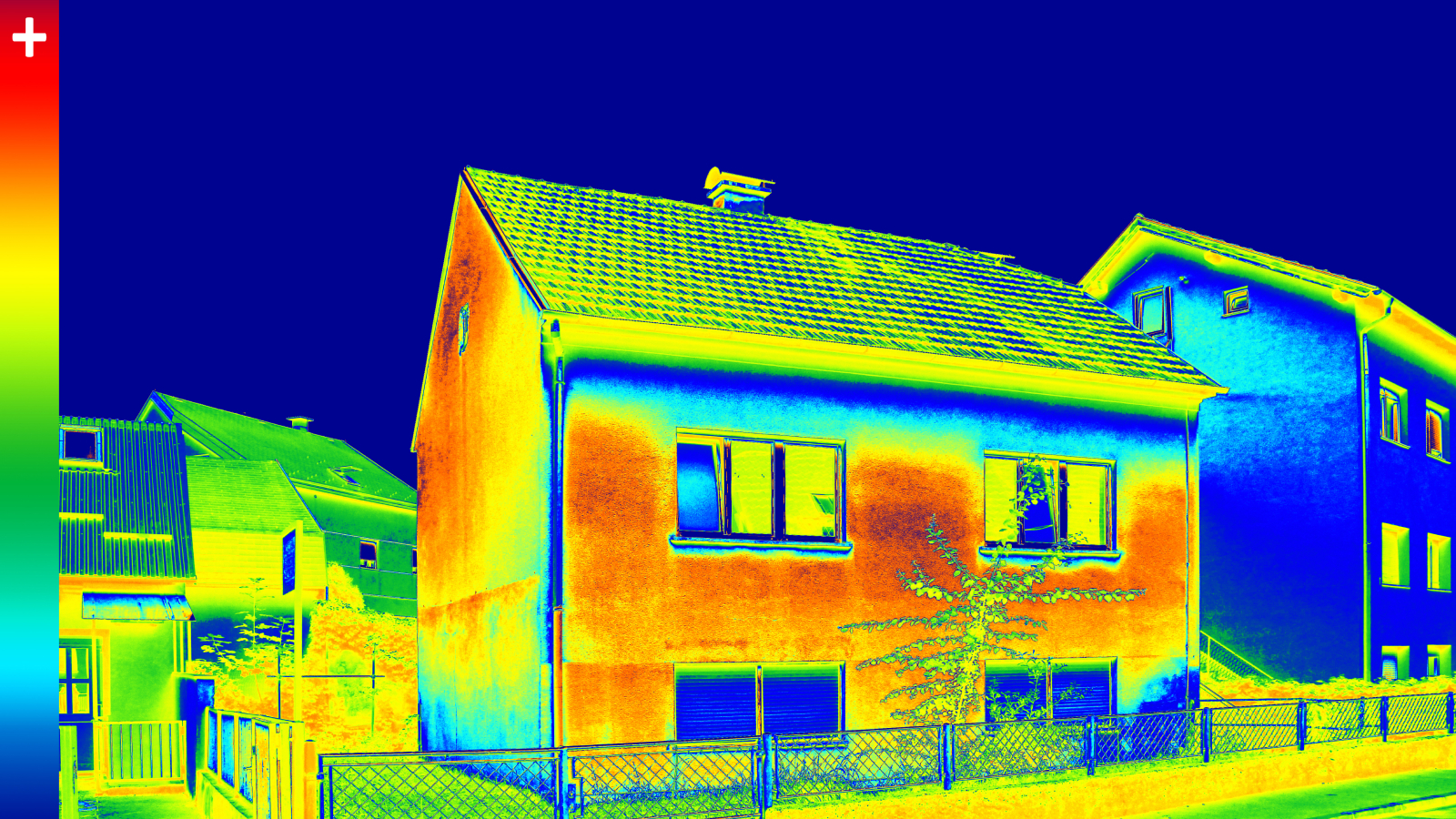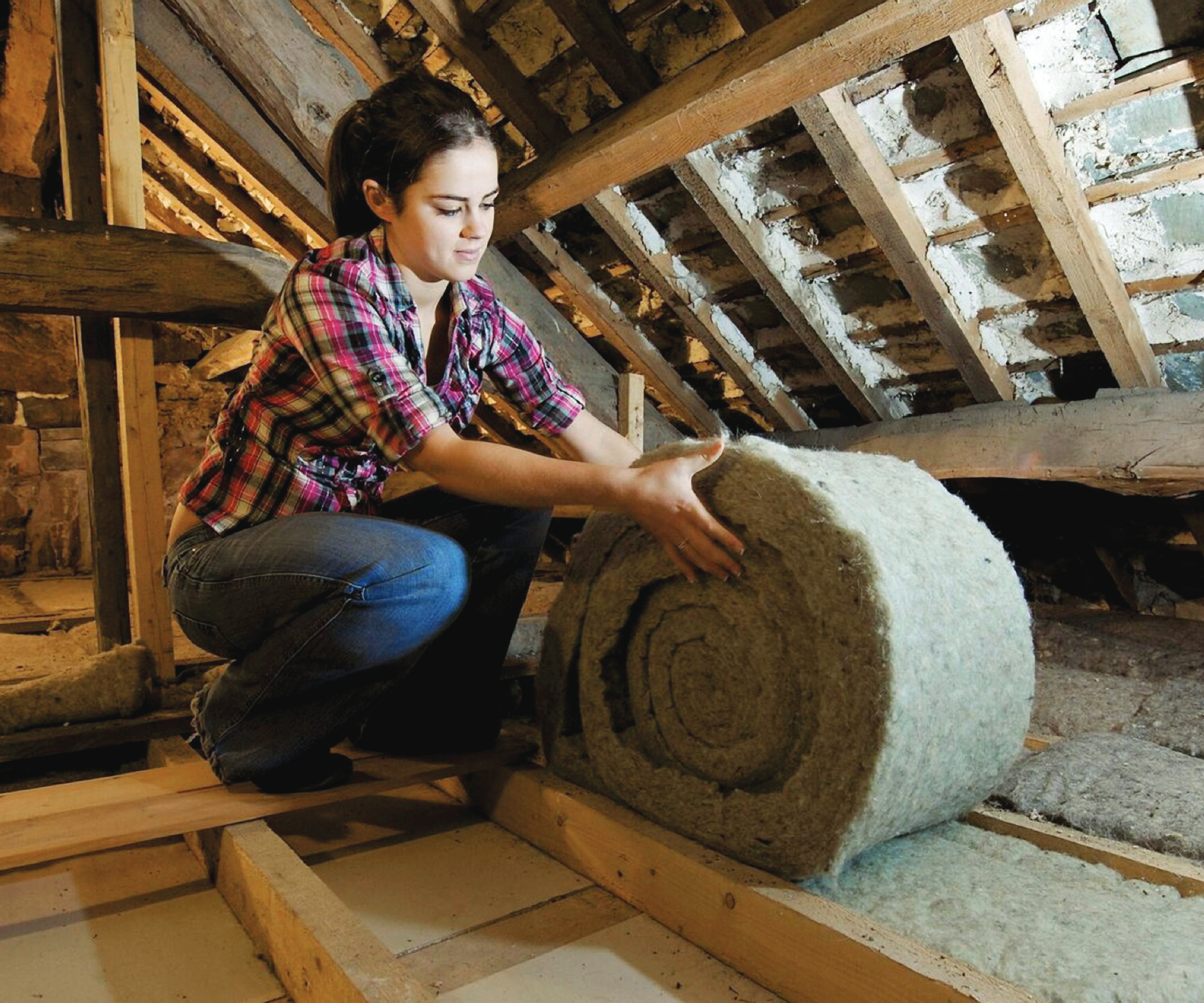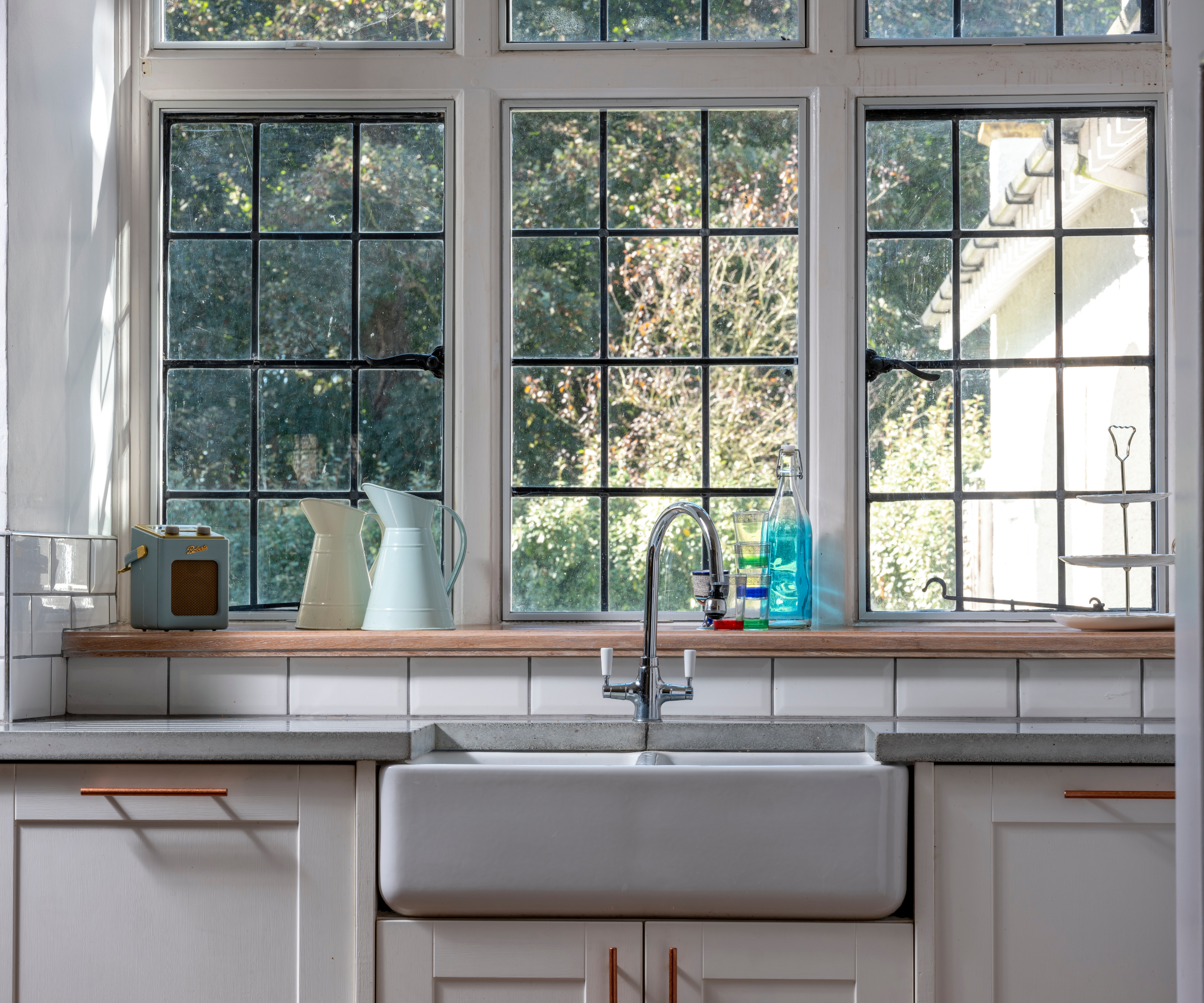Find out where heat loss in a house happens and what you can do to fix it
Heat loss in a house happens for a number of reasons, but it's something we'd all rather avoid. With the help of experts, we've created a check-list of measures you can take to help reduce your heat loss this winter

As rising energy costs continue to hit the headlines, most of us are keen to know how to reduce heat loss in a home. Feeling cold is bad enough — being cold and paying over the odds for it is something we'd all rather avoid.
But when it comes to energy saving tips, what are the tried and tested methods for staying warm this winter? Do they all require investment, or are there simple steps you can undertake yourself that don't involve too much cost or take up lots of time?
We asked a variety of experts for their best advice on how to reduce heat loss in a house and here's what they shared.
Where does heat loss in a house happen the most?
Heat loss in a house happens in a variety of locations across your home. “Walls, doors, floors, windows, and your roof are all the main escape routes for warmth," explains Andy Simms, building expert at MyBuilder.com, "especially if they are not properly insulated."
“It can be very hard to put a number on how much heat escapes your property," says Andy, "however getting a recent energy performance certificate to grade your property would give you a good idea.
"When it comes to knowing how to reduce heat loss in a home," he adds, "it's all about identifying weak spots in the building and tackling them one by one to make your home energy-efficient, so it's warm in winter and cooler in summer.”

Andy has almost a decade of experience in the construction sector as a multi-trader. He has a vast amount of knowledge on making sure your home is operating at its peak performance level.
How much reducing heat loss in a home could help you save
- Windows - The 2023, ‘A Window of Opportunity’ report from the Glass and Glazing Federation (GGF) and British Glass, found that even those homes who were insulated to best pratice and had older double glazed windows could reduce their heat loss from 44% to 22% by replacing them with new windows
- Walls - One third of all heat loss in a home is through uninsulated walls according to the Energy Savings Trust (EST)
- Floors - Insulating floors could save you £60 a year (EST)
- Roof - One quarter of heat is lost through your roof if it’s not insulated (EST)
Taking fabric first measures to reduce heat loss in a house
Although they will require a larger investment, fabric first steps – those measures which look at making your home as energy efficient as possible, with or without heating – will always provide you with a long-term solution to reducing heat loss in a home.
Bring your dream home to life with expert advice, how to guides and design inspiration. Sign up for our newsletter and get two free tickets to a Homebuilding & Renovating Show near you.
1. Undertake an insulation audit
A lack of home insulation is one of the most common reasons for heat loss in a home. But even if you've already taken action by insulating walls, there are still other places you can improve as well. "Insulation can be added to your walls, floors, roof, loft, pipes, and radiators," says Andy Simms, "helping to create a barrier in all of these areas to stop heat from slipping away."
Of course, adding insulation isn't always a simple or easy job and may depend on the type of walls and roof you have. Cavity wall insulation is much easier to install because it requires injections into the cavities with insulating material, slowing the movement of heat across the wall. Solid wall insulation is more costly and complicated, however, and will either involve external wall insulation or internal wall insulation measures to be implemented.
Another place to consider insulating using a fabric first approach is by insulating floors, says Liam Cleverdon, flooring trends expert at Flooring King.
“Ahead of the colder months, flooring should be protected with additional insulation. This consists of installing insulation boards on floorboards to reduce the heat lost when temperatures drop," says Liam. "It can keep houses warmer for longer, improving the home's overall energy efficiency."
The benefits of insulation can be vast. A study from 2017 by the University of Sheffield and UCL found that adding insulation to suspended timber ground floors, (commonly found in homes built before the Second World War) can reduce heat loss by up to 92%.

2. Make sure your loft and roof are in good condition
Hot air rises, which is why it’s so important to ensure that your roof is properly protected against unnecessary heat loss. If you’re losing heat through your roof then you may also experience draughts and cold spots, which could lead to problems with damp.
The simplest way to prevent heat loss is by insulating a roof, loft or attic. This keeps your heat trapped within your living space and increases your home’s energy efficiency. Loft insulation costs should pay for themselves many times over in their average 40-year lifetime according to the EST.
"Also inspect the roof for any loose, missing or damaged tiles," says Phil Wood, UK managing director at Contura, as these could also contribute to heat loss in a home. "Check the areas around the chimney and air vents, and hire a professional to repair accordingly. This can be a costly job, but in order to prevent leaks, heat escaping and cold getting in, it's a necessary job."


Phil is the UK managing director of Contura Stoves (UK) Limited, part of the Swedish NIBE AB Group of companies. He has a wealth of heating knowledge having worked in the fireplace, fire and stove industry since 1985.
3. Upgrade your windows or glazing
Heat loss through your windows is predominantly caused by radiation through your glazing, while air leakage is another big contributor, especially from windows with poor insulation. If you have a budget to spend, you may want to consider investigating double glazing costs, or even looking at whether triple glazing costs are within your reach.
“Double or even triple glazing your windows will also make a big difference, as they trap the warm air between the panels,” says Andy Simms.
Alternatively, if you live in a listed building or conservation area, where the rules on replacing single glazed windows can be stricter, adding secondary glazing could help to prevent cold draughts and improve your soundproofing on top of limiting your heat loss.
However, as replacing your glazing isn’t always the easiest or cheapest fix, even if your windows are in good condition, you may be able to improve their efficiency using some less expensive measures.

Additional steps you can take to prevent heat loss in a home
4. Use plenty of draught proofing and undertake regular maintenance
Draught proofing your windows and doors is one of the cheapest and easiest ways to reduce heat loss in a home, and it's a measure recommended by every expert we spoke to.
“Draught proofing your home is an easy, fast, and affordable method to retain heat and save energy," says Laura Nicholson, B&Q’s head of tools & hardware buying. "You can fit draught excluders to your windows or draught proof internal and external doors.
"This will prevent air from flowing around the edges of your frame and improve the comfort of your home. For windows, self-adhesive plastic or foam stripping works wonders along the edges."
Maintenance is also important, adds Phil Wood. "Check windows and doors to ensure they close properly, and fill any cracks with the appropriate sealant. And although it may sound counter-intuitive," he adds, don't forget that even though it’s tempting to keep windows permanently closed during the winter, homes need natural ventilation and air flow to prevent moisture build up.
“Make sure you still open windows daily," says Phil, "as this will ensure old, stale air is mixed with fresh air with the added benefit being fresh air heats up far quicker and retains heat better."
Try these draught proofing products
5. Use the right window coverings
With your window frames and glazing in top condition, another way of reducing heat loss in a home is to ensure you have the best and most thermally efficient window coverings. This is particularly the case if you’ve been able to make less upgrades to your windows than you’d like.
I installed shutters when I moved into my apartment last year, knowing that the single glazing would be losing heat. They've certainly helped, although I'm also now looking into secondary glazing or double glazing if I can get listed building consent.
If you prefer the cosy feel offered by curtains instead, follow the advice of Debbie Leigh, design manager at Iliv.
“Good quality, lined curtains are suitable all-year-round," says Debbie, "offering temperature control and privacy. Their ability to help keep the cold air from seeping into the home makes them particularly useful during the autumn and winter months.
“Another simple yet effective strategy for retaining warmth in your home is to keep curtains open during the day and close them when it gets dark,” she says. “During daylight hours, allowing sunlight to penetrate through the windows will help to utilise the natural heat from the sun contributing to a warmer indoor environment. This is especially beneficial in colder seasons.
“Then, in the evening, closing the curtains creates an additional layer of insulation. This barrier helps to trap the warmth generated during the day and prevents it from escaping through the windows, thereby maintaining a cosier atmosphere inside.”

If you really want to reduce the heat loss in a house, Debbie recommends you don’t just stop at one layer of curtains.
“Layering your window dressings is an even more effective way to prevent heat loss by creating multiple barriers that slow down heat transfer,” says Debbie, suggesting the following methods to get the best results:
- Start with thermal curtains, made from a thick, dense fabric and which have an insulating layer such as a thermal lining
- Choose floor length curtains which extend past the sides of the window frame, to fully cover the window
- Ensure thermal curtains overlap at the centre for maximum benefit
- Next layer with sheer curtains or blinds to provide an extra air barrier and help reduce radiant heat loss while still allowing light to filter through
- If using blinds, choose a recess fit which leaves less of a gap for draughts
- You could also consider a pelmet which helps block warm air from rising up and escaping over the curtain rod

Debbie is Iliv's design manager and offers a wealth of knowledge on both the practical purposes and aesthetic values of using window coverings in the home.
6. Manage your heating system effectively
Although it may sound contradictory to talk about your heating causing heat loss in a home, not using it correctly can indeed contribute to heat wastage, or in other words, heat being lost that could have otherwise helped keep you warm.
Jacket your hot water cylinder
One of the first places heat is lost is through hot water cylinders that do not have a jacket. Without a jacket, your cylinder is essentially just acting as a radiator, pushing out heat into an empty cupboard. According to MyBuilder.com. the simple addition of one, such as this Essentials Four-Panel Hot Water Cylinder Jacket from Screwfix could reduce heat loss by over 75%. If you already have one, make sure it's at least 75mm thick and covers the tank completely.
Check your boiler temp as it could be losing you heat
By dropping the temperature flow on your boilers to 60°C – which refers to the temperature of the water flowing out of the boiler – this will also help your boiler to achieve higher efficiency.
It does this because at 60°C your boiler is more readily able to condense water vapour and recover latent heat from this vapourisation, which would otherwise have been lost up the flue.
Upgrade your thermostat system
There are many different types of heating controls, including timers, thermostats and plumbing and electronic components, which can make a significant difference to your heating efficiency.
As well as having accurate temperature sensors, most smart controls also include additional energy saving functions. And you can upgrade or install heating controls without replacing your boiler.
David Hilton, one of Homebuilding & Renovating’s heating experts, explains why an upgrade could help prevent unnecessary heat loss in a home.
“In many homes the central heating system is controlled via a single thermostat or if you are lucky, one on each floor. The thermostat is usually in the hallway and therefore only really reacts to the temperature in that space. The rooms on the south side of the home may be too warm and the rooms on the north side may be too cold.
“Instead, consider switching to a wireless system,” advises David. “Motorised radiator valves are available from a number of suppliers that simply replace the thermostatic radiator valves on the radiator.
“A central controller or mobile device can be used to set the temperature in each room; the temperatures in the room can also be controlled on the valves themselves as well as via other smart devices," he explains.
"These systems provide complete wireless room-by-room control of the heating in your home meaning you aren’t losing heat by trying to get each room to a temperature that simply isn’t required.”

David is Homebuilding & Renovating's heat and energy expert, offering a vast amount of knowledge when it comes to ensuring your home is heated safely and efficiently.
7. Don't waste heat through chimneys or ineffective radiators
Another easy fix to stop heat loss is by blocking up unused chimneys. “Installing a chimney cushion or ballon in the fireplace, is a must, as around 20% of a room’s heat can be lost up an open chimney,” says Nick Duggan, managing director of The Radiator Centre. Try this Chimney Balloon Draught Excluder from Amazon if you haven't blocked yours up when you decided on your empty fireplace ideas.
When it comes to ways of making sure the types of radiators you have don’t contribute to heat loss in a home, Nick shares some other suggestions.
“When thinking about heat efficiency, take care not to block any radiators with furniture and ideally try not to use radiator cover ideas either. Anything like this will block the airflow, stopping the heat being able to radiate fully.
“Knowing how to bleed a radiator and doing so at least once a year is a must, to ensure they are operating efficiently," continues Nick. "Air will build up in radiators as they are often the highest points around a system and where there is air, water will not be able to reach. This means that straight away you will not be benefitting from the radiator’s full heat potential, which may then mean you are tempted to turn the heating up or keep it on for longer, both of which will are just wasting heat.”

“Also install a shelf just above your radiator," suggests Nick. "The shelf acts as a barrier, guiding the heat flow into the living space, rather than allowing it to rise and get trapped behind curtains or blinds.
“You could even direct the heat further by adding radiator reflectors in the form of reflective panels to the wall behind your radiators,” he adds. “These panels are designed to reflect heat back into the room, preventing it from being absorbed by the wall. This simple addition can enhance a radiator's efficiency by ensuring the heat goes where it's needed most, and not back into the wall behind the radiator.”
FAQ
Can I get financial help to reduce heat loss in my home?
Low-income households can apply to the Energy Company Obligation scheme to make certain energy-efficient improvements, such as new insulation.
There’s also the Home Upgrade Grant (provided by local authorities) which enables low-income households in England to get grants to improve their home's energy efficiency.
The Boiler Upgrade Scheme is also worth considering if you are considering upgrading to a more energy conscious air source heat pump.
If you're finding your home isn't losing too much heat, but you have an older conservatory, don't forget you could also be losing heat from your sun room. Find out how to winterproof your conservatory this year and check out our guide to the best conservatory heaters.
Jack has worked in journalism for over a decade and was the former News Editor of Homebuilding & Renovating between 2019 until 2023. In his time as News Editor he broke the most relevant and beneficial stories for self builders, extenders and renovators, including the latest news on the construction materials shortage, planning permission and green initiatives. In 2021 he appeared on BBC's The World at One to discuss the government's planning reforms.
He enjoys testing new tools and gadgets, and having bought his first home in 2013, he has renovated every room and recently finished a garden renovation.




